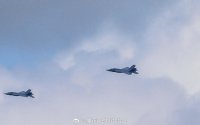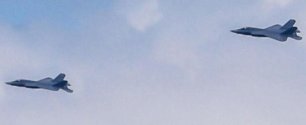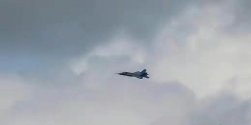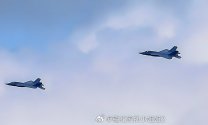Lethe
Captain
Why not both? J-15 is pretty huge, but it is mixed with J-35. Likewise US can also mix up their plane. NGAD can be be big long range aircraft while F-35 be the smaller one. The difference is J-15 is the primary strike platform, while I think NGAD will be primarily an air superiority platform.
That is definitely what is going to happen on the USN side. NGAD will replace F/A-18E/F (who knows about -G) and serve alongside F-35C (and cross-decked USMC F-35Bs). The questions of role emphasis is interesting. We should note that F-35C is very much at the upper limit of what someone could reasonably consider a "medium" aircraft. At 15.7 tonnes empty it is heavier than an F-15E Strike Eagle, and with large internal fuel capacity (nearly 9 tonnes) and the F135 engine with high BPR and low SFC, it has very respectable combat radius and is likely closer to what USN desires for that strike role than either it or F/A-18E/F are to what it wants for offensive/defensive counter-air roles. I expect that USN will pursue a flexible design for NGAD, but the presence of F-35C in the inventory may tilt the trade-off analysis in favour of air combat characteristics.
Leaving the two STOBAR carriers and questions of what aircraft they can and cannot support aside, I envision that J-15 and J-35 would serve alongside one another in complementary roles throughout the 2030s, before a new aircraft enters service to replace the J-15. In that medium-longer term, J-35 would not only serve as the "lo" complement to this notional future "hi" aircraft in a "hi-lo" mix, as F/A-18 did to A-6 and F-14, but it would also provide a viable backup option to hedge against delays and shortfalls with that future aircraft program, in turn freeing that program to embrace a greater level of risk.
However, I am not convinced that the PLAN will be operating under similar conditions or face similar requirements in the foreseeable future. While it obviously remains to be seen how CSGs will fit into PLA operational doctrine, I would argue that the tradeoffs of larger size for carrier aircraft are much less one-sided for a navy seeking to win space and time from a strategically defensive position with a heavy reliance on land-based support close to its home ports. The PLAAF already fields several types of long-range aircraft in-theatre. I'm not so certain that larger carrier-based ones are necessarily the best way forward for the PLAN.
I think this is an excellent point that gestures toward a bunch of fundamental questions, each of which could undoubtedly spur their own productive discussions. How do we envision China's carrier groups to operate in the medium-term? What offensive and defensive tasks will they be required to be capable of performing, in what geographical theatres and against what kinds of threats? What matrix of platforms and systems are best adapted to these tasks, what alternatives exist and what are the various trade-offs of each.
To pick up just one of these potential threads, I am not quite as convinced as the general consensus appears to be that the basic Soviet Navy philosophy whereby carrier-based aircraft were intended primarily for air combat and reconnaissance roles, with delivery of offensive munitions being tasked back to surface ships, submarines, and land-based strategic airpower, was wrong, at least in the context of naval engagements (the limitations of relying on missile magazines for anything like a sustained air campaign against land targets are clear).
To pick up one further thread, despite the increasing homogenisation of combat aircraft design, we should also recognise that even similarly-sized aircraft can be optimised for very different roles. The MiG-29 Fulcrum was designed to fulfil specific Soviet requirements for an affordable yet high-performance aircraft operating in a specific, limited domain, i.e. intense air battles above central Europe. The aircraft's short legs, low MTBO engines and limited airframe life all emerged from the twin imperatives to drive cost down and performance up, and the recognition that losses in that environment would be very high irrespective of how many hours the airframe was rated for. Indeed, it was recognised at the time that the MiG-29 offered "F-15-class" performance in an "F-16-class" shell. In the post-Cold War era, that original highly specialised design has been progressively "re-balanced" into a more generic medium combat aircraft, which has increasingly made it look like an inferior Flanker. I guess the point of this diversion is: yes, you can indeed match threats asymmetrically.
Last edited:




